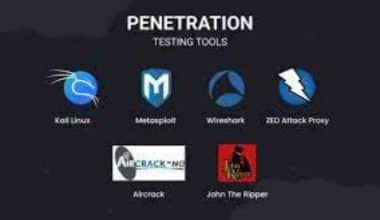Programmatic campaigns have traditionally been the domain of larger budgets and media agencies, but the rapid emergence of self-service tools has increased access to the technology for smaller brands and given them the opportunity to compete with more established ones without using costly middlemen.
The term “programmatic advertising” has been popular in the marketing sector for a while. So this article will explain in detail what exactly programmatic does. What distinguishes it from conventional display marketing, and how?
Programmatic Definition
In contrast to conventional (often manual) techniques of digital advertising, programmatic advertising refers to the use of automated technology for media buying (the process of purchasing advertising space). Ads are served to the right user at the right time and at the right price thanks to programmatic media buying, which makes use of data insights and algorithms.
Why is Buying Programmatic Media Significant?
The traditional media buying process is labor-intensive and slow because it often involves numerous requests for proposals (RFPs), human negotiations, and manual insertion of orders (IOs). Also, advertisers have limited control over the inventory and placement because advertising is bought in bulk.
Programmatic Advertiser
Even if we are unaware of it, practically all advertisers use programmatic advertising because it is prevalent. There are several programmatic advertising platforms available, each with its own specialties, despite the fact that your attention may be focused on a few well-known major companies.
Programmatic Advertising
The Top Programmatic Advertising Platforms
#1.PubMatic
is a full-featured programmatic ad platform since it provides comprehensive solutions for both publishers and marketers. A private marketplace for premium ad inventory, a large selection of ad formats and channels, strong real-time analytics, and fraud-free program refunds to guard against fraudulent activities are just a few of the features.
#2. Adobe Advertising Cloud
One of the top programmatic advertising platforms is offered by Adobe Advertising Cloud, a well-known company in software. To provide advertisers with a comprehensive offering, it focuses on linked TV, video, display, native, audio, and search campaign ads. It’s an excellent tool to maximize return on your investment with an emphasis on inventory management and people-based marketing.
Although the user interface requires some getting used to, once you do, it’s a wonderful platform for maximizing your return on ad expenditure.
#3. Criteo
Criteo helps publishers generate more revenue from their content by working mostly on the supply side. To assist small publishers in monetizing their content, it integrates social media, video, display, online, and mobile adverts. For more than 685 million daily active users, it increases ad returns by utilizing extensive purchase and intent data as well as the power of AI.
#4. MediaMath
Around 3,500 advertisers trust MediaMath because of its end-to-end campaign management and omnichannel ad campaigns. It excels at integrating data, enabling advertisers to use the MediaMath audience tool to reach their most valuable clients. Every possible ad format is offered, including display, native, video, audio, and digital out-of-home commercials.
The MediaMath staff, known for excellent customer service and support, is available to assist advertisers in making the most of their campaigns.
#5. .Google Ad Manager
Google Ad Manager is a sizable supply-side programmatic advertising platform that helps publishers monetize their content. Google Ad Manager serves nearly 75% of all ad impressions in the United States, making it a potent ally for connecting with your audience wherever they congregate online.
The best part about Google Ad Manager is how simple it is to set up and begin serving ads for publishers. Although it provides good tools and analytics, it is not always seen as offering the best value (RPM).
#6. War Room
It delivers search, display, social, video, native, audio, e-commerce, and even Metaverse advertising by combining the strength of cutting-edge programmatic technology with human insights. It has something to offer advertisers of all sizes thanks to its access to over 90,000 premium ad networks.
#7. Amobee
This combines many programmatic ad formats to produce a full advertising campaign. Advertisers may connect with their target consumers in a true omnichannel strategy with options for TV, connected TV, digital, and social media advertising.
Amobee can assist advertisers in coordinating their campaigns to get the best results because it has a thorough understanding of how people consume information across many platforms.
#8. AdRoll
Has more than 15 years’ worth of data gathered from working with more than 120,000 brands of fuel AdRoll. High-quality ad templates are provided to get you going right away, and it’s quick and simple to set up and utilize. AdRoll’s effective audience targeting, with choices for contextual, lookalike, demographic, and interest-based campaigns, is one of its primary advantages.
It takes satisfaction in maximizing profits for companies of all sizes, from large multinational enterprises to one-person marketing teams.
#9. Xandr
This works with approximately 193,000 companies and is in charge of 6.7 billion daily ad impressions. It serves as an ad exchange for many various ad types and provides demand and supply services. The great data that Xandr offers, which enables advertisers to improve their buying tactics, is one of its most impressive qualities. It provides an intuitive user interface and all the resources marketers use to optimize campaigns.
#10. The SmartyAds
programmatic advertising platform gives both publishers and advertisers access to a broad range of services. Its main objective is to make advertising simpler so that companies can prioritize who they do business with. It’s a great tool for advertisers to increase click-through rates and conversions, and it also benefits publishers by increasing yields, fill rates, and engagement.
In North America alone, SmartyAds receives over 500 million monthly impressions, making it a popular choice for both advertisers and publishers.
Programmatic Media
You need to be familiar with the terminology used in programmatic media buying in order to comprehend this procedure. Secondly, there are three different types of programmatic media buying:
#1. Real-Time Bidding (RTB)
This can also be referred to as an open auction, which is the process through which inventory prices are set in real-time during an auction. This is available to any advertiser or publication, as the name implies. RTB is regarded as a financially advantageous method of purchasing media with a huge audience.
#2. Private Marketplaces (PMPs)
Open auctions are similar to private marketplaces (PMPs), however, PMPs contain restrictions on who can bid. PMPs are exclusively accessible to certain advertisers by invitation. Publishers may, however, occasionally use a selection procedure that enables advertising to request an invitation.
#3. Programmatic Direct
This is when a publisher avoids auctions and sells media inventory to an advertiser at a set cost per mile (CPM) (or multiple advertisers).
#4. Sell-Side Platform
The software known as a “sell-side platform” (SSP) enables publishers to automatically and in real-time sell display, mobile, and video ad impressions to prospective purchasers. Ad exchanges, networks, and DSPs are included in this (see below). Publishers now have more control over their inventory and CPMs.
#5. Demand-Side Platform (DSP)
This is the piece of software that allows advertisers and agencies to purchase cross-platform ad inventory. The supply side feeds merchandise into the ad exchanger in this way. It is possible for advertisers, agencies, networks, and publishers to buy and sell ad space thanks to the DSP’s connection to the ad exchange. The bidding procedure can then be used to reach an agreement on inventory prices.
What is Programmatic Digital Marketing?
According to the Digital Marketing Institute, programmatic advertising is simply “the use of software to acquire digital advertising.” Programmatic marketing refers to the dissemination of advertisements when people aren’t actively involved.
What are the 4 Main Components of Programmatic?
The fundamental structure of a programmatic advertising ecosystem consists of four key elements.
- A data management platform (DMP),
- An ad exchange, (AE)
- A demand-side platform (DSP),
- And a supply-side platform (SSP).
What are Programmatic Ads Examples?
#1. Transparency and Adaptability
In the world of programmatic ad buying, each day is unique. So, a person who enjoys structure and established routines might not be a good fit for the position. Instead, seek out those who value adaptability and uphold the three principles of TubeMogul: FSO (figure it out), MSH (make it happen), and GSD (get it done). Recruits must be flexible, accepting of some degree of uncertainty, and cognizant of the bigger picture.
#2. Experience and Abilities
Hiring someone with experience in digital, programmatic, broadcast, or media buying is ideal, as should be obvious. But it’s not always possible because this is a relatively new field.
If hiring for an entry-level position, such as media trading, trafficking, or campaign management, look for critical thinkers who are good at problem-solving and have an uncanny attention to detail. Some of our best media traders and campaign managers come from a background in data, sciences, and math.
If someone is applying with experience in advertising, but is new to programmatic, probe them on their perception of what programmatic means, test their knowledge on the elements of a campaign lifecycle, and see how they do when given access to a programmatic platform. You could also take it one step further and ask them to watch a tutorial and try to set up a campaign.
#3. Sell them on Growth Potential
Because there are so many opportunities, programmatic positions are excellent for people who want to try something new but have prior experience in the advertising industry. People have transitioned from Media Traders or Campaign Managers to Application Engineers or Product Managers at TubeMogul. Other team members have transitioned from media strategy or account management to sales roles.
There are also sub-department opportunities within the Client Services organization where you can broaden your skill set and hone in on a different product, such as switching from digital to television, display, social, mobile, or cross-screen. The programmatic industry is expanding so quickly that it’s the ideal career choice for someone who doesn’t want to fit into any particular category and is always eager to learn.
#4. Be Truthful about Training Schedules
A person cannot become proficient in programmatic fundamentals overnight. According to our observations, the typical programmatic specialist needs three to five months to become competent with the platform they are using. It’s crucial to wait to assess a new hire’s knowledge until after this period has passed because they need it to comprehend the industry, strategies, and goals and gain practical experience to internalize their lessons.
#5. What Should the Training Package Include
All programmatic specialists will require two skill sets to be successful: Technical and soft skills. Soft skills include client-facing abilities like public speaking and presenting skills, client communication, analytical thinking, storytelling, and handling objections. Campaign Planning is a technical skill (e.g. understanding of ad formats, targeting strategies, brand safety, fraud, viewability, inventory sources, private inventory, DMPs, PMPs, and planning best practices), Campaign execution, optimization strategies and problem-solving, measurement, and reporting (e.g., ad tags, tracking pixels, campaign building strategies and pacing strategies).
Is Programmatic the Same as PPC?
A digital marketing consultant can speed up the process of purchasing and displaying ads online by using programmatic advertising. You can target specific age and gender demographics in your search campaigns using PPC.
Is Google Ads Programmatic?
Sell your ads the way you want. Every format benefits from the scope and impact of Google Ad Manager’s data-driven, programmatic ad buying.
What are Programmatic Skills?
All programmatic specialists will require both soft and technical skill sets in order to succeed. Soft skills include client-facing abilities like public speaking and presenting skills, client communication, analytical thinking, storytelling, and handling objections.
Conclusion
If you’re just getting started, develop a new plan that incorporates programmatic using the fundamentals and advantages of programmatic advertising as a guide. Your programming success will depend heavily on your ability to comprehend the features and capabilities of each platform.
Related Articles
- PROGRAMMATIC ADVERTISING: Meaning, Examples & Benefits
- Government Grants (Detailed Guide)
- CPA MARKETING NETWORK: 20 Best Networks With High Offers
- Amazon Affiliate Marketing: All You Should Know and How to Earn
- BEST RV INSURANCE: Cheap Rates to go for in 2023
- CHANNEL MARKETING: Meaning, Strategies Cross & Omni Channel






